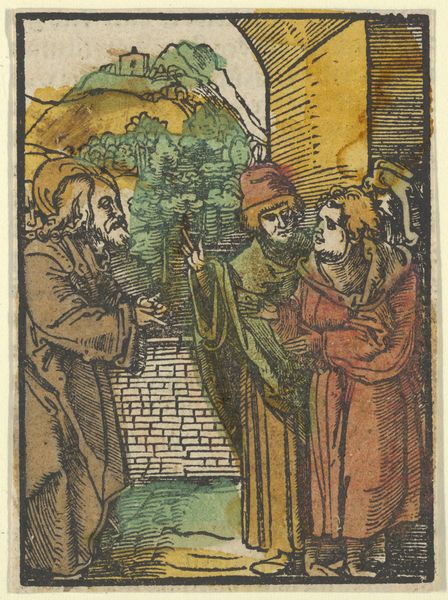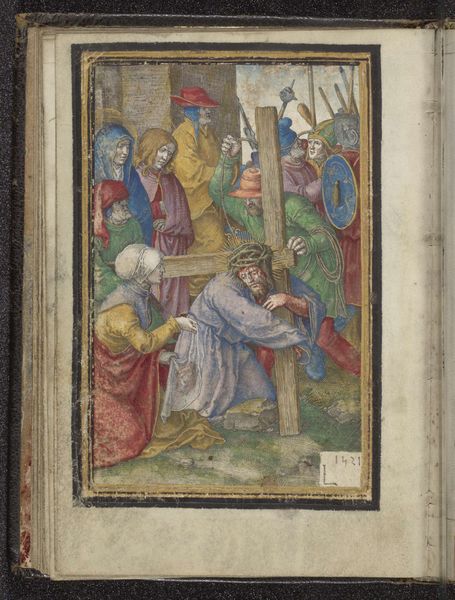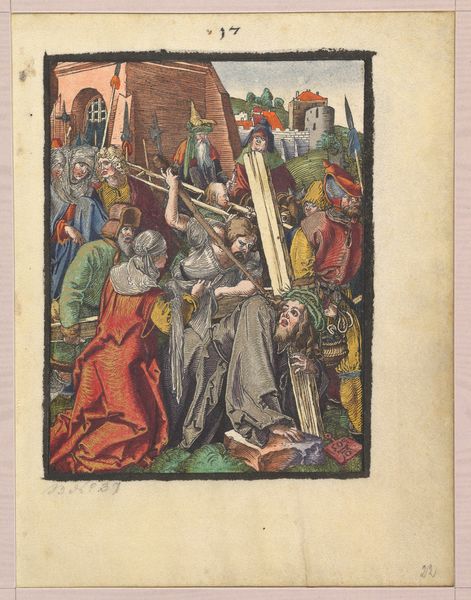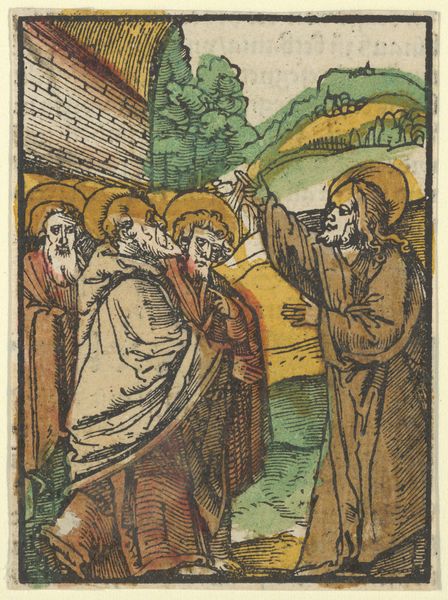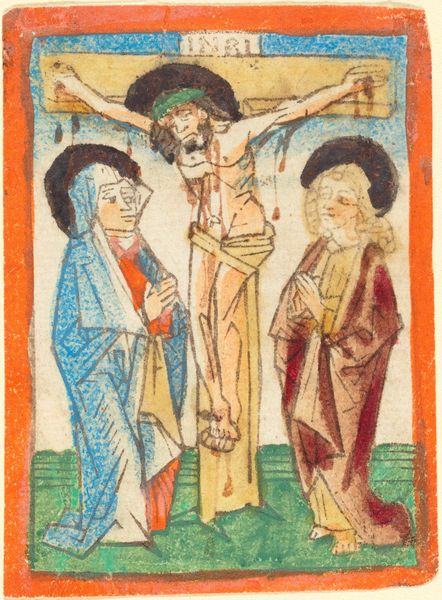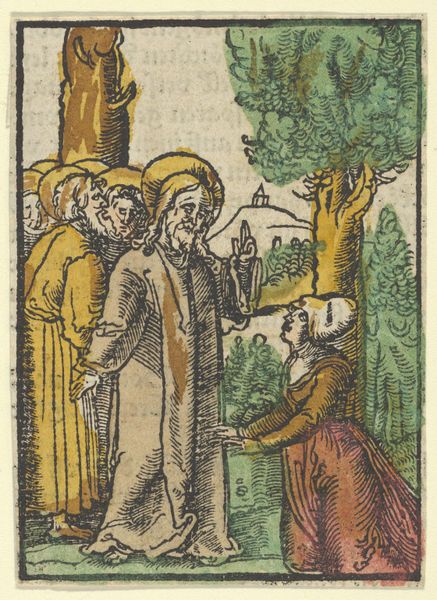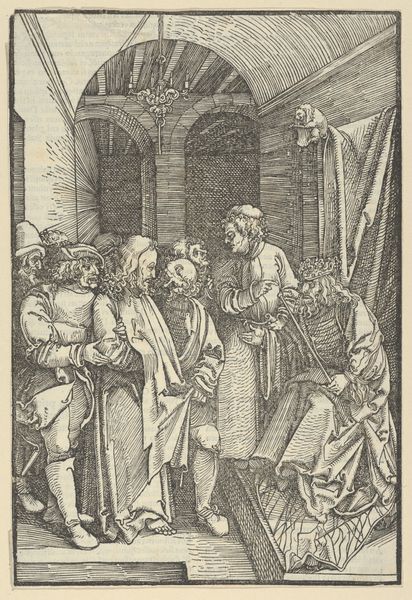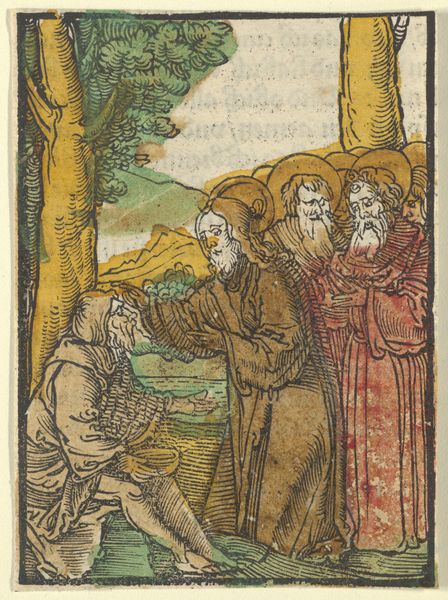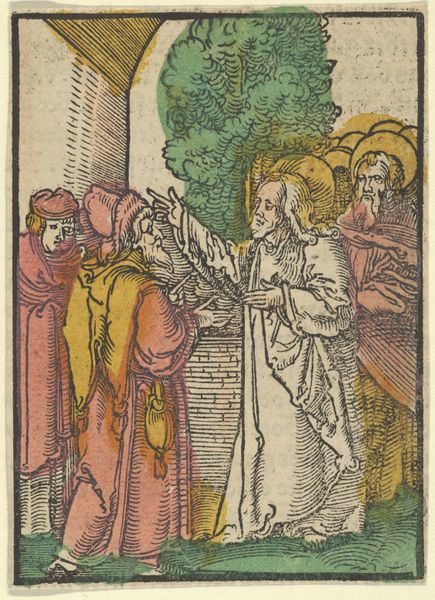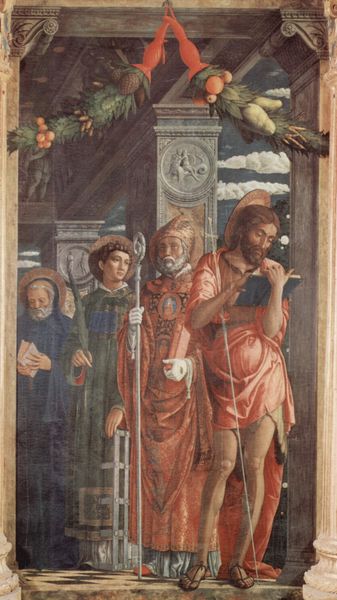
drawing, tempera, watercolor
#
drawing
#
medieval
#
narrative-art
#
tempera
#
gothic
#
figuration
#
watercolor
#
coloured pencil
#
history-painting
#
miniature
#
watercolor
Dimensions: image: 10.5 x 8.5 cm (4 1/8 x 3 3/8 in.)
Copyright: National Gallery of Art: CC0 1.0
Curator: Let's delve into "The Passover Lamb," a drawing, likely with tempera and watercolor, created around 1420-1430 by an anonymous artist during the Gothic period. Editor: My first thought is of starkness. The muted colors and the raw, almost vulnerable depiction of the lamb create a solemn atmosphere. There's a sense of anticipation, or perhaps dread. Curator: The choice of materials speaks volumes. Watercolor and tempera allowed for the precise detail typical of illuminated manuscripts. Consider the socio-economic implications: The pigments, the parchment, the skill required to produce such a piece—these were all products of specialized labor within a hierarchical society. The making of this was surely a complex affair involving multiple artisans. Editor: Absolutely. And situating it within the Passover narrative, we have to think about the layered meanings here. It is not merely a religious scene but a potent symbol of liberation from oppression. Look at how the figures are positioned – their gaze directed at the lamb. The lamb embodies not just sacrifice but a future free from slavery. What were the political undertones for people looking at it during its time? How did they see themselves reflected in that history? Curator: Precisely! And speaking of "seeing," we must examine the visual construction. Notice the architectural elements—they confine the figures, reinforcing the sense of both shelter and entrapment. The materiality of the walls and roof become stand-ins for larger social structures. The surface on which they stand. The actual materials... Were those local stone that might have suggested regional identification? Editor: That tension is key. There is confinement but hope is there too. This work isn't just a depiction of an event; it's a meditation on enduring themes of faith, hope, and the long, hard struggle for emancipation from oppression that finds resonances still today. I am always interested to reflect upon what such artwork can tell us of ongoing legacies. Curator: Ultimately, "The Passover Lamb," speaks of both a specific moment in history and timeless material realities shaping art’s creation. Examining these intersection allows deeper appreciation. Editor: A truly moving encounter that reveals both historical context and echoes in current themes about identity and culture. Thank you for providing clarity through this dialogue.
Comments
No comments
Be the first to comment and join the conversation on the ultimate creative platform.
